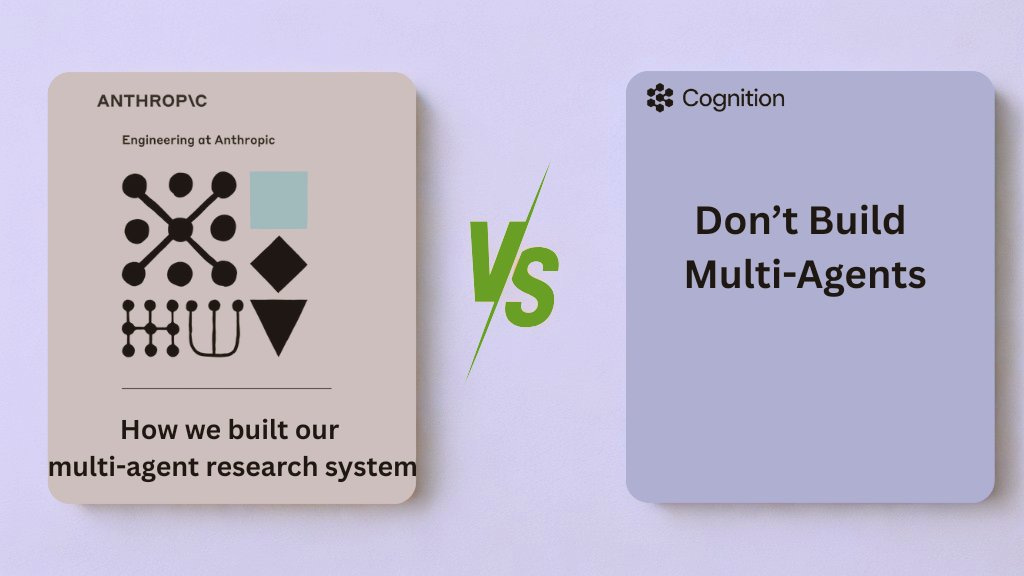Multi-Agent Systems: Anthropic vs Cognition vs LangChain
Multi-agent AI systems debate: Anthropic advocates parallel research agents, Cognition warns of coordination issues, LangChain offers flexible solutions.
"AI Disruption" Publication 6900 Subscriptions 20% Discount Offer Link.
The architecture of AI agents driven by large language models has been hotly debated recently, with one key point of contention being: Should multi-agent systems be built?
Three articles have coincidentally focused on this question: Anthropic's "How we built our multi-agent research system", Cognition's "Don't Build Multi-Agents", and LangChain's "How and when to build multi-agent systems".
Here's how it all started—
Two leading AI companies—Anthropic and Cognition (the parent company of the famous AI programming agent Devin)—published articles with differing viewpoints, one after another! (P.S.: For easy reference, let's call them the "pro" and "con" sides)
Pro side: Anthropic's team published "How we built our multi-agent research system", expressing their stance: "Multi-agent systems are worth it and are already running in production environments," while detailing their experience and feasibility of building multi-agent systems.
Con side: Cognition's team (Devin's parent company) published "Don't Build Multi-Agents". While not completely dismissing multi-agent system concepts, they indeed "complained" about the blood, sweat, and tears encountered on their multi-agent system development journey, as well as the drawbacks of existing approaches.
Pro Side - Anthropic: Why They "Should Be Built"
Business Requirements: For open-ended research queries, single agents easily get stuck in the context window and serial search bottlenecks.
Architecture: Lead Agent handles planning and task distribution, dynamically generating Sub-agents for parallel retrieval as needed, then Citation Agent annotates references for closed-loop delivery.
Results: In internal BrowseComp/proprietary evaluations, multi-agent architecture improved success rates by ~90%, but at the cost of massive token usage and complex operations.
They also provided eight key insights, with the core being reducing coordination complexity and improving observability for debugging.
Cognition: Why "Don't Build Them Yet"
Pain Points: Devin needs to write executable code, and any context inconsistency directly leads to compilation/logic errors.
Following Two Key Principles:
Share context — Sub-agents must have access to the complete decision chain, not just task descriptions.
Actions carry implicit decisions — Conflicts during parallel writing are nearly impossible to resolve automatically.
Alternative Solutions:
Single-threaded long-context agents;
Or introduce specialized "small models" for context compression, summarizing the long history before continuing.
Conclusion: Today's multi-agent systems are better suited for "read-heavy, write-light" tasks; for consistency-critical tasks like code writing, monolithic reliability > parallel throughput.


